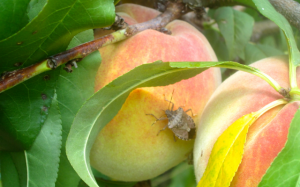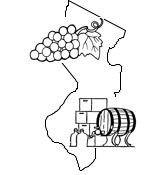 Valent and Gowan have released a supplemental label for Venom and Scorpion (dinotefuran).
Valent and Gowan have released a supplemental label for Venom and Scorpion (dinotefuran).
[Read more…]
Fruit Crops Edition - Wine Grape Section
Seasonal updates on diseases, insects, weeds impacting small fruit (blueberry, cranberry, and wine grape). Fruit Pest Alerts are also available via this category feed.
Subscription is through the general Fruit feed available via EMAIL and RSS.
Dinotefuran Supplemental Label
Wine Grape Information for the Region – Abridged
From Mark Chien’s Wine Grape Information for Pennsylvania and the Region Apr 15, 2013
http://pawinegrape.com/
Just a few of the topics Mark covers in this issue:
- Wine Grape Integrated Pest Management Workshop Presentations, March 2013
- Grower Perspective on Post-veraison Problems– Galen Troxell, Galen Glen Vineyard
- Early-season Flower and Cluster Disease Control– Bryan Hed, Penn State
- Late-season Disease Control: cluster rots and downy mildew– Alice Wise, Cornell
- Bird Netting in Vineyards– Libby Tarleton, Cornell
- Wasp and Bee Management in Grapes– Jody Gangloff-Kaufmann, Cornell
- Grape Berry Moth and Spotted Wing Drosophila– Mike Saunders, Penn State
- Brown Marmorated Stink Bug: a new and very important pest of grapes and wine– Joe Fiola, Univ of Md
- Calibrating your Sprayer– Marty Keen, Landey Vineyards
- Development of a Low Cost Vertical Patternator (Part 2) – Marty Keen
- Red Blotch Virus Learning Resources- “If you have vinifera vines that were planted in the past five years that have displayed reddening of leaves, particularly late in the season, they may be infected by the Red Blotch virus. The symptoms are similar to leafroll and growers should study fact sheets to tell the two apart. Red Blotch can severely affect a vine’s ability to ripen its fruit.”
Gloucester County Fruit Twilight Meeting
Tree fruit and wine grape commercial growers are invited to discuss insect, disease, and weed control with RCE NJAES Specialists and the Fruit IPM team.
Date: 7 pm, Tuesday, April 23, 2013
Location: Cooperative Extension of Gloucester County
County Government Services Building
1200 N. Delsea Dr.
Clayton, NJ 08312-1095
Phone: 856-307-6450
Annual Weed Control in Vineyards
The program for the control of annual weeds in the vineyard should consider the weed free strip under the trellis and the sod middles between the rows separately. The “Weed Control Season” starts in late fall, after harvest. The program implemented in the spring depends on what herbicides were applied the previous fall. If herbicides were applied in late fall, applications can be delayed until later in the spring. Residual herbicides should be applied in late winter or early spring after the soil is no longer frozen, if no late fall treatment was applied. [Read more…]
The Cicadas are Coming!
 Brood II of the 17 year cicada (Magicicada sp.) is expected to emerge in the Northeast and mid-Atlantic this spring. The last emergence in 1996 did not cause many problems in southern NJ counties as I recall. Brood II is one of the broods reported on the east coast. This map indicates the possibility of a broad emergence throughout the region.
Brood II of the 17 year cicada (Magicicada sp.) is expected to emerge in the Northeast and mid-Atlantic this spring. The last emergence in 1996 did not cause many problems in southern NJ counties as I recall. Brood II is one of the broods reported on the east coast. This map indicates the possibility of a broad emergence throughout the region.
Cicada’s can damage trees and shrubs by laying eggs in the twigs. Damage can be severe if the adult emergence is large (populations can be in the tens of thousands per acre!). Damage can also come from sap feeding by females. New and young plantings up to 4 years of age are generally most susceptible to damage. Emergence occurs once the soil temperature reaches 64 degrees (sometime in May in southern NJ). Growers should start scouting in late April by listening for cicada songs and looking for damage.
Information on Cicada life history for tree fruit and for wine grape can be found at:
Grape Expectations Symposium
 The symposium is a day-long series of lectures by professionals in viticulture, enology, and marketing.
The symposium is a day-long series of lectures by professionals in viticulture, enology, and marketing.
Lectures are designed to present new and relevant information to professionals and amateurs involved with any aspect of grape growing or the wine industry.
This program will look at the similarities of the New Jersey terroir and Bordeaux and present methods to adapt our Mid-Atlantic grape and wine production to more closely resemble French methodology. The making of the 2011 Governor’s Cup winners will also be addressed. [Read more…]
